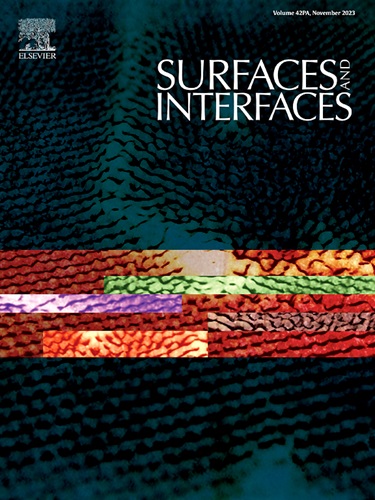亥姆霍兹线圈和超顺磁性纳米载体在局部抑制癌细胞迁移和侵袭中的应用
IF 5.7
2区 材料科学
Q2 CHEMISTRY, PHYSICAL
引用次数: 0
摘要
晚期肝细胞癌(HCC)患者死亡率高,索拉非尼溶解度低,是HCC治疗的常用药物。设计了一个系统来提高索拉非尼的生物利用度:将索拉非尼装入氧化铁纳米颗粒和极低频电磁场(EMF;100hz, 5mT)增强索拉非尼从纳米载体的释放。纳米载体的FTIR光谱证实了藻酸盐包被和索拉非尼的存在。荧光显微镜下可见纳米颗粒被肝癌细胞HepG2内化。纳米载体中索拉非尼的释放量从0.102 μg增加到0.454 μg (p <;0.001),在一对亥姆霍兹线圈产生的电动势存在下。游离索拉非尼(4μg/mL)处理组与负载索拉非尼纳米载体和EMF处理组HepG2细胞凋亡程度相似。划痕迁移试验结果显示,负载索拉非尼纳米载体和EMF处理组的恢复率为5%,而游离索拉非尼组的恢复率为1%,均显著低于未处理组(41.3%,p <;0.001)。与未治疗组相比,负载索拉非尼的纳米载体EMF使细胞侵袭减少了79.2%,游离索拉非尼减少了69.5% (p <;0.05)。负载sfb的纳米载体与EMF的结合缓慢释放低水平的索拉非尼,对癌细胞的抑制作用与治疗浓度的游离索拉非尼相似。这表明可以减少索拉非尼用于治疗HCC,可能减少副作用。本文章由计算机程序翻译,如有差异,请以英文原文为准。
Application of Helmholtz Coils and superparamagnetic nanocarrier in localized inhibition of cancer cell migration and invasion
Patients with advanced hepatocellular carcinoma (HCC) have a high death rate, and sorafenib, which has low solubility, is a common drug for HCC treatment. A system was designed to increase the bioavailability of sorafenib: sorafenib was loaded into iron oxide nanoparticles and extremely low frequency electromagnetic field (EMF; 100 Hz, 5mT) was applied to enhance sorafenib release from the nanocarrier. FTIR spectrum of the nanocarrier confirmed the existence of alginate coating and sorafenib. The nanoparticles were seen internalized by liver cancer cells HepG2 under fluorescence microscopy. The amount of sorafenib released from 1 mg of nanocarrier increased from 0.102 μg to 0.454 μg (p < 0.001) in the presence of EMF generated by a pair of Helmholtz coils. Similar degrees of HepG2 cell apoptosis were observed between the group treated with free sorafenib (4μg/mL) and the group treated with sorafenib-loaded nanocarriers and EMF. The scratch migration test results showed that the group treated with sorafenib-loaded nanocarrier and EMF showed <5 % of recovery while the group treated with free sorafenib had <1 % recovery, both significantly lower than the untreated group (41.3 %, p < 0.001). Compared to the untreated group, sorafenib-loaded nanocarrier with EMF reduced cell invasion by 79.2 %, and free sorafenib by 69.5 % (p < 0.05). The combination of the SFB-loaded nanocarrier and EMF slowly released low levels of sorafenib and had similar inhibitory effects on cancer cells as did free sorafenib at therapeutic concentration. This indicates that less sorafenib may be used to treat HCC, possibly reducing side effects.
求助全文
通过发布文献求助,成功后即可免费获取论文全文。
去求助
来源期刊

Surfaces and Interfaces
Chemistry-General Chemistry
CiteScore
8.50
自引率
6.50%
发文量
753
审稿时长
35 days
期刊介绍:
The aim of the journal is to provide a respectful outlet for ''sound science'' papers in all research areas on surfaces and interfaces. We define sound science papers as papers that describe new and well-executed research, but that do not necessarily provide brand new insights or are merely a description of research results.
Surfaces and Interfaces publishes research papers in all fields of surface science which may not always find the right home on first submission to our Elsevier sister journals (Applied Surface, Surface and Coatings Technology, Thin Solid Films)
 求助内容:
求助内容: 应助结果提醒方式:
应助结果提醒方式:


